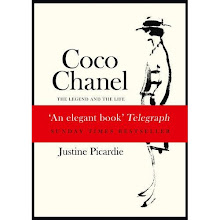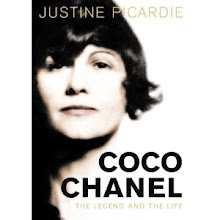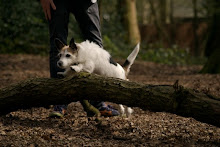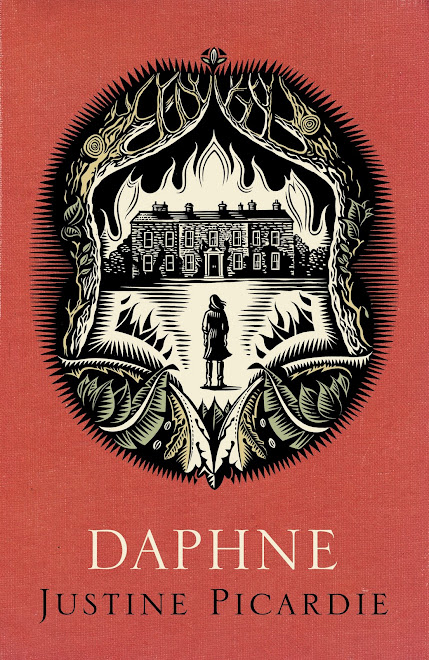Thursday 27 December 2012
Happy Christmas
The skies have been blue over Tillypronie, and a pale frost hard on the ground. Today there is the lightest dusting of snow, like icing sugar, but the dark earth is still visible below. Yesterday I walked down to the river, which runs deep and swift, filled with last week's torrents of rain; and then to the frozen loch, where last summer's lilies lie beneath the ice, their leaves motionless, as if held in time like Sleeping Beauty in a glass casket; and in the garden the berries are bright as a fairy tale...
Up here in the hills, it is good to feel one's small place in a vast landscape; to feel a true sense of perspective, where mountains are so much greater than ourselves.
Sunday 16 December 2012
A Christmas nativity at Migvie
There's nothing like a carol concert to make you feel Christmas-y, and yesterday was one of the best; the children from Logie Coldstone school came up the icy path to Migvie church to sing and dance and make merry. It's six months since we got married there, when the long summer days made December nights seem very distant; and the weeks have sped along too quickly since then, turning all at once into dark midwinter. But inside the church, there was much good cheer, with a warm message from the minister who married us (lovely Mr Ribbons), followed by mince pies, Scottish shortbread, and mulled winter Pimms for the grownups.
I'm now contemplating the return to London, and the rush to finish the March issue before Christmas Eve. Meanwhile, here's a link to the online piece I wrote for Bazaar about the Chanel show in Edinburgh earlier this month.
Sunday 2 December 2012
The January issue of Harper's Bazaar...
... is out tomorrow. It feels scary, as well as exciting, like having the first draft of a new book published... which I hope you might find intriguing, as an insight into developing ideas. Regular readers of this blog may very well recognize themes and motifs from previous preoccupations and pieces of work (Chanel, Vreeland, Dior, et al; the landscape of art and fashion, and an exploration of how understanding the past is a way to move forwards). Anyway, here's a peek from behind the scenes of the cover shoot. And there's lots more inside the magazine, including a Titian detective story by Hannah Rothschild, and a wonderful memoir by Tanya Gold. Please do let me know what you think...
Sunday 18 November 2012
Today we walked up to Alexandra Palace
A sunny Sunday, and my son and I set off to admire the view over the city, all the way south to the Kent hills. On the way home, we bought fresh fish at the Farmer's Market, a bunch of green parsley, and a good handful of courgettes (a recipe for a happy Sunday evening: supper then Homeland = bliss). In the afternoon, I swept autumn leaves from the garden and planted dozens of bulbs. The squirrels will eat some, inevitably, but I'm hoping that the alliums will survive and flourish next spring...
Sunday 11 November 2012
Remembrance Sunday
A beautiful autumn Sunday in the Highlands, where the leaves have not yet fallen from the trees, and the heather is still in bloom, as are the last roses in the garden. To Logie Coldstone for a Remembrance Sunday service, where there were soldiers from the Second World War, alongside several returning from Afghanistan. Very humbling... and then so touching to hear the silence broken by the sound of the bagpipes, playing a lament entitled Flowers of the Forest.
Yesterday, we were talking about the whys and wherefores of poppies growing in a wild flower meadow at Tillypronie, and the mystery of how they seed in some places, but not others. All of which has reminded me to re-read John McCrae's famous poem, In Flanders Fields, written in May 1915.
In Flanders fields the poppies blow
Between the crosses, row on row,
That mark our place; and in the sky
The larks, still bravely singing, fly
Scarce heard amid the guns below.
We are the Dead. Short days ago
We lived, felt dawn, saw sunset glow,
Loved and were loved, and now we lie
In Flanders fields...
Wednesday 24 October 2012
Please forgive me while I was gone...
I am so sorry for the long absence, but have been in a whirlwind of work at Harper's Bazaar, going to bed too late and getting up horribly early; though all the while -- usually at 4 in the morning -- thinking, I must update my blog! I haven't forgotten you -- in fact, I often think to myself, what would Kairu and Enid like to read in Bazaar? Or Lilac in May, or Jaywalker, or the Scrivener, and everyone else whose taste and ideas have been so important to these pages.
Meanwhile, I escaped to Tillypronie last weekend, where the garden is looking so beautiful this season -- the autumnal leaves and heathers are gorgeous to behold... and there is even a splash of blue amongst the scarlet and golden palette.
Meanwhile, I escaped to Tillypronie last weekend, where the garden is looking so beautiful this season -- the autumnal leaves and heathers are gorgeous to behold... and there is even a splash of blue amongst the scarlet and golden palette.
Saturday 6 October 2012
Snaps: Paris Fashion Week
J-Lo Front Row at Valentino: the great man himself in conversation with herself.
Bedazzled at Louis Vuitton: short and sharp, yet also sweet.
Chanel on a vast scale at the Grand Palais: a triumphantly confident show, against a backdrop of white windmills.
Bedazzled at Louis Vuitton: short and sharp, yet also sweet.
Chanel on a vast scale at the Grand Palais: a triumphantly confident show, against a backdrop of white windmills.
Liberty London
I was scurrying from the tube yesterday to the Bazaar office, feeling rushed and slightly over-wrought after delays on the Victoria line and a claustrophobic tube carriage, when I looked up from the grey pavement to the blue sky, and noticed a golden ship on top of Liberty... All these years of living in London, and I'd never seen that beautiful boat before.
Thursday 13 September 2012
New job, new office...
Sunday 9 September 2012
David Downton and his Masters of Fashion Illustration
Allow me to introduce you to David Downton, artist in residence at Claridges (lucky, lucky man -- although well-deserved), and a wonderful fashion illustrator. I've been a long-term fan of his work, and very much recommend his new book.
Last month we had tea together at his v.chic suite in Claridges, and here's the piece I've just written about him (and the great illustrators he so admires) for the Sunday Telegraph, or you can read it below...
Last month we had tea together at his v.chic suite in Claridges, and here's the piece I've just written about him (and the great illustrators he so admires) for the Sunday Telegraph, or you can read it below...
‘What can fashion
illustration do that photography can’t?’ asks David Downton; a question that he
is more qualified than most to answer, given his reputation as one of the best
contemporary illustrators at work today; and now the author of a handsome new book
which includes a portfolio of his own work, alongside that of his favourite artists
from the past. ‘It can tell an alternative story in fashion, and hold a mirror
up to the times.’
Downton himself has
drawn everyone from Dita Von Teese to Cate Blanchett, and covered fashion shows
since his first commission to illustrate Paris couture in July 1996; but
despite his privileged position in the front row and backstage (and an enviable
role as artist-in-residence at Claridges), he is working in an era where
photography has tended to push illustrations out of glossy magazines. Gone are
the days when Harper’s Bazaar or Vogue featured the most creative of artists on
their front covers: Erté, for example, (born
Romain de Tirtoff in St Petersburg in 1892), who contributed original fashion
illustrations to Bazaar from 1915 to 1936. As Downton observes, Erté’s Bazaar
covers ‘are masterpieces of Art Deco design’, and his singular vision the
catalyst for fashion in its broadest sense, from Paul Poiret’s couture to Ballets
Russes costumes.
The broad sweep of
Downton’s choice of artists in his book (‘Masters of Fashion Illustration’) is
an indication of the genre’s capacity for innovation and ambition. Here are
Giovanni Boldini’s bravura portraits of the Belle Époque, including his painting
of a darkly glamorous Marchesa Casati in a Poiret gown; and Boldini’s natural
successor, Etienne Drian, who was introduced to the pages of Harper’s Bazar in
1921 (the magazine’s second ‘a’ was not added until 1929), thereafter sketching
the Duchess of Windsor, amongst other society beauties.
Equally striking were the
images produced for Vogue in the 1930s by Carl Erickson, universally known as
Eric, who recorded what Downton describes as ‘the theatre of high fashion – the
Paris collections, a Broadway opening, or cocktails at the Ritz – with an
effortless ease and assurance.’ At its most daring, Eric’s work inhabits a
similar territory to art – the remarkable economy of line in a May 1935 cover
for Vogue has echoes of Matisse – and always retained its charm, even after his
descent into alcoholism.
But it was the arrival of
Carmel Snow as editor at Harper’s Bazaar in 1933 that provided a wider canvas
for illustrators; she commissioned Jean Cocteau, Christian Berard, and Marcel Vertès, a Hungarian artist
who also collaborated with Elsa Schiaparelli, designing her striking perfume
bottles and advertising. When Snow appointed the modernist graphic designer
Alexey Brodovitch as art director of Bazaar in 1934, the magazine became ever more
ambitious; soon afterwards introducing the surrealist work of Salvador Dali.
(His first feature, entitled ‘Imaginative Suggestions for This Summer in
Florida’, included drawings of evening gowns made of coral and roses.)
Not that Harper’s Bazaar had the monopoly on a golden age of
illustration, as Downton’s compilation makes abundantly clear. Consider Bernard
Blossac’s work for Jacques Fath and Christian Dior (‘no one ever painted the
curve of a woman’s back with such languid grace’, says Downton, admiringly),
and also for the French magazine, L’Officiel, where Blossac’s sketches recorded
the comings and goings of fashionable Paris with a deftly elegant toch. Then
there was Tom Keogh’s brilliantly colourful illustrations for French Vogue in
the late Forties and early Fifties, with his iridescent palette of citrus
yellow, vivid orange, emerald green, shocking pink, that look no less airily
modern now than they did at the time.
But for all their élan and brio, the work of fashion illustrators was
soon to be squeezed out by the predominance of a new generation of
photographers – led by Richard Avedon and Irving Penn – as the publishers of
Vogue and Bazaar noted that news stand sales tended to increase when a
photograph, rather than a drawing, ran on the front cover. Carmel Snow battled
with her legendary proprietor, William Randolph Hearst, to keep illustration in
Harper’s Bazaar (and Vertès continued to contribute some remarkable covers),
but in general, artists were challenged to prove that they could offer something
very different to the potency of photography.
Amongst the most versatile was René Bouché, who navigated his
way between advertising and editorial, fashion and reportage, society
portraiture and travel assignments. His status as a Vogue fashion illustrator
remained sufficiently high for him to be accorded a suite at the Crillon when
he was covering the Paris collections, but it is as a portraitist that Downton
most admires Bouché; particularly for the ‘lightening veracity’ of his charcoal
sketches of Marella Agnelli, Jacqueline Kennedy, and Marlene Dietrich. The
latter rated Bouché’s portrait so highly that she used it to advertise her
concert appearances until her retirement; evidence, perhaps, of the graceful appeal
of a line drawing, over and above the harsher eye of a camera. As Downton
remarks, ‘I love the fact that one of the most photographed women of the 20th
century should choose to be represented by an illustration.’
He also focuses on the work of Kenneth Paul Block, a
forty-year veteran at Women’s Wear Daily (on staff as an illustrator until
1992), as expressive in black and white newsprint as glossy colour, and more compelling
than much of the photographic competition. ‘Compare Block’s gestural, dynamic
view of fashion shows in Paris or New York with the pedestrian catwalk
photography of the time and the difference is telling,’ says Downton. ‘The
photographs give you the detail; Block puts you in the front row.’ He also
celebrates the exuberant work of Antonio Lopez, whose work embodied the spirit
of Sixties pop culture and Op Art, as surely as Rene Gruau defined Dior’s New
Look two decades before; and onwards to Tony Viramontes, whose dynamic
illustrations of Eighties fashion are every bit as evocative of the era as a
song by David Bowie.
Finally, to Downton’s contemporary portraits, which possess
the grace often lacking from overly manipulated modern photography. Like all
the best masters of this curiously hybrid genre, his work prompts yet another
question: is it true art or mere illustration? Certainly, he is able to capture
the very essence of fashion – so often regarded as the most elusive of art
forms – and as such deserves to stand the test of time in an otherwise
ephemeral age.
Sunday 2 September 2012
Diana Vreeland
I've been immersed in all things Vreeland, as you might imagine, with my new job (though actually, she is a long-time heroine of mine, as regular blog readers will know). This month sees the release of a wonderful new film about her, that I do recommend, by Lisa Immordino Vreeland -- 'The Eye Has To Travel' (and I also urge anyone interested in fashion to read Lisa's book of the same name). Meanwhile, here is a piece that I wrote for today's Sunday Telegraph...
Saturday 25 August 2012
Tillypronie garden opening
Much preparation here for tomorrow's garden opening at Tillypronie: cakes being baked, signs gathered, paths raked, grass mown, borders weeded. The hedgerows are looking particularly lovely, filled with wild flowers that have blossomed in the last couple of days, and the roses are blooming, just in time (they've been later than usual this summer, after a rainy June).
Meanwhile, we went to the Lonach Gathering and Games today, to cheer the marchers and pipers and drummers and dancers and the terrifically strong men who toss cabers and hammers from one side of the ring to the other. This is the fourth time that I've watched the clansmen marching in, and they seem to become even more stirring each year.
Meanwhile, we went to the Lonach Gathering and Games today, to cheer the marchers and pipers and drummers and dancers and the terrifically strong men who toss cabers and hammers from one side of the ring to the other. This is the fourth time that I've watched the clansmen marching in, and they seem to become even more stirring each year.
Sunday 19 August 2012
On the hill...
I've been down to London again this week, for work and a domestic drain crisis (ah, the glamour). But now back in the Highlands, where the heather is glorious, and the sun has been mostly shining. After lunch today, I went for a long walk, and grazed on tiny wild blueberries (otherwise known as blaeberries) -- they taste as fresh as the breeze. On the way home, a soft rain fell, which was oddly soothing, however much I love the sunlight and blue skies.
Sunday 12 August 2012
The Tarland Show
Thank you so much to everyone who came to the Edinburgh Book Festival on Saturday evening (it was a lovely, lively, spirited audience), which I thoroughly enjoyed -- having dashed there straight after the unmissable Tarland show. It's the third summer I've been lucky enough to experience such a highlight of the Aberdeenshire season; this year blessed with sunshine and blue skies, Scottish dancing, prize-winning Highland ponies, a parade of vintage tractors, delicious homemade preserves (I stocked up on blackcurrant jam and crab-apple jelly). And then on to the horticultural show in the afternoon, to admire prize-winning sweet peas (the petals gloriously pretty, despite all those long days of rain earlier in the summer), jewel-coloured chrysanthemums, perfect pansies, and the most beautiful roses. The fruit and vegetables were equally impressive: painterly displays of garden produce, luscious gooseberries and raspberries, succulent green lettuces, sturdily handsome potatoes.
Alongside, entries of home-baked gingerbread (properly sticky and dark), chic cupcakes, traditional pastries, elderflower wine, intricate knitting, iridescent paintings, handwritten poems, and everywhere evidence of imagination, skilful practice, and immense hard work.
When all is well in the Tarland show, then all seems right in the world...
Alongside, entries of home-baked gingerbread (properly sticky and dark), chic cupcakes, traditional pastries, elderflower wine, intricate knitting, iridescent paintings, handwritten poems, and everywhere evidence of imagination, skilful practice, and immense hard work.
When all is well in the Tarland show, then all seems right in the world...
Monday 6 August 2012
To the North
Just on my way up again to Scotland, and looking forward to speaking at the Edinburgh Festival on Saturday 11th. I very much hope that blog readers and writers will be there, to talk about Chanel and her Scottish connections (tweed, fishing, the Highlands and all...). Please do spread the word...
Wednesday 1 August 2012
Beyond blue
I've just watched a wonderfully evocative television documentary on the colour blue (the second part of a series written and presented by James Fox on the history of art in three colours: gold, blue, and white; do watch it if you have a chance). It starts on the Venetian lagoon with the story of the arrival of lapis lazuli, a thousand years ago, and the way a stone that looks like a fragment of the sky was turned into the intense pigment of ultramarine that transformed the paintings of Titian and Giotto.
All of which reminded me of the magical few days of our honeymoon in Venice -- staying on Torcello at the Locanda Cipriani (a place that inspired Daphne du Maurier, Nancy Mitford, and Ernest Hemingway; I had known the Du Maurier connection, but not about Mitford, whose photographs are still on the walls, and who spent several months writing there). Just across the water from Torcello is Burano, where I took these pictures of a rainbow of houses (and a handful of Murano glass marbles), including the brightest blue I've ever seen, like the heavenly clear sky above...
All of which reminded me of the magical few days of our honeymoon in Venice -- staying on Torcello at the Locanda Cipriani (a place that inspired Daphne du Maurier, Nancy Mitford, and Ernest Hemingway; I had known the Du Maurier connection, but not about Mitford, whose photographs are still on the walls, and who spent several months writing there). Just across the water from Torcello is Burano, where I took these pictures of a rainbow of houses (and a handful of Murano glass marbles), including the brightest blue I've ever seen, like the heavenly clear sky above...
Tuesday 24 July 2012
The church at Migvie
The first time I saw the church at Migvie was just over three years ago (on my first visit to Tillypronie), and when I stepped inside, my eyes filled with tears. I was far from home, yet felt that home might one day be near; and I could not help but think of my sister -- as if I had found myself, and Ruth, in one of those rare places wherein those we have loved, and believed lost, seem suddenly closer again. Of course, I did not know at the time that I would return to the church, several summers later, to marry the man who had first taken me there (and who was responsible for its beautiful restoration, after it had fallen into disrepair); nor that my sister's daughter would be my bridesmaid. But if time is sometimes circular, rather than linear -- and at the church in Migvie, circles are everywhere -- then here was (here is) -- a moment when the past, the present, and the future, seemed to slip into a whole. How glad I am that our wedding took place in the round....
These lines are on one of the four walls at Migvie, but they also face the stone seats in the shape of a cross in the middle of the church (although some might see these as another circle). Elsewhere, inside and outside the church, are reminders of the site's ancient origins; hence the incorporation of Celtic and Pictish symbols, in stone fragments and carvings, alongside the Christian imagery. I hope you enjoy the pictures; and even if your journeys do not take you to Migvie, be sure to return to the sacred places that you know to be your own...
These lines are on one of the four walls at Migvie, but they also face the stone seats in the shape of a cross in the middle of the church (although some might see these as another circle). Elsewhere, inside and outside the church, are reminders of the site's ancient origins; hence the incorporation of Celtic and Pictish symbols, in stone fragments and carvings, alongside the Christian imagery. I hope you enjoy the pictures; and even if your journeys do not take you to Migvie, be sure to return to the sacred places that you know to be your own...
 |
| The door into the church... |
 |
| and inside, an unexpected light... |
 |
| a place where a small bird... |
 |
| might find sanctuary from a storm... |
Subscribe to:
Posts (Atom)























































